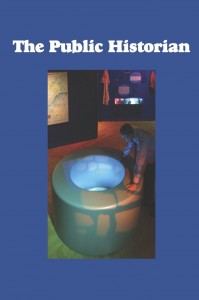 The Public Historian and NCPH are pleased to present a collection of digital materials relating to the creation of the “Slavery in New York” exhibit at the New-York Historical Society. The exhibit was created by the American History Workshop led by Richard Rabinowitz, who authored the essay “Eavesdropping at the Well: Interpretive Media in the Slavery in New York Exhibit” in the journal’s August 2013 issue (Vol. 35, No. 3). These materials include planning, archival, and design documents as well as photographs of completed exhibit components in situ.
The Public Historian and NCPH are pleased to present a collection of digital materials relating to the creation of the “Slavery in New York” exhibit at the New-York Historical Society. The exhibit was created by the American History Workshop led by Richard Rabinowitz, who authored the essay “Eavesdropping at the Well: Interpretive Media in the Slavery in New York Exhibit” in the journal’s August 2013 issue (Vol. 35, No. 3). These materials include planning, archival, and design documents as well as photographs of completed exhibit components in situ.
Richard Rabinowitz’s aim in donating these materials and allowing them to be displayed online is to strengthen our collective understanding of the aesthetic, intellectual, and institutional processes involved in exhibit creation as a way to reflect critically on exhibit practice.
Follow-up commentaries on “Eavesdropping at the Well” can be found in Vol. 36, No. 1 of The Public Historian (February 2014 – Table of Contents available here). In “Curator as Auteur,” Steve Lubar explores what it actually takes to realize Rabinowitz’s goal of extremely holistic, multi-dimensional curation of historical exhibits, and asks whether it is always the model to be pursued. Leslie Harris, a scholar who was one of the intellectual contributors to the “Slavery in New York” exhibit, examines “Imperfect Archives and the Historical Imagination,” and argues for ways of embracing the challenges of archival gaps and silences.



